Step back in history...
About the trail – The heritage audio trail is set at one of South Wales’ most beautiful nature reserves, which supports a wealth of wildlife. Wildflower meadows are intertwined with fields of sunflowers, lakes, ponds, woods and hedgerows.
There are key focal points along the way, as well as the reserve interpretation panels, which will teach you about the history and wildlife of the site.
Audio Tour Trail
Enjoy our Parc Slip Heritage and History Audio Trail. Click on the options below.
1. The Coal Dram
Coal Dram at Parc Slip.
A cart formerly used to haul coal from the coal face to the surface in coal mines on the underground mine railway. In the early days a young or very young boy would be employed to open and shut these doors to allow drams to pass.
Audio
2. Father and Son
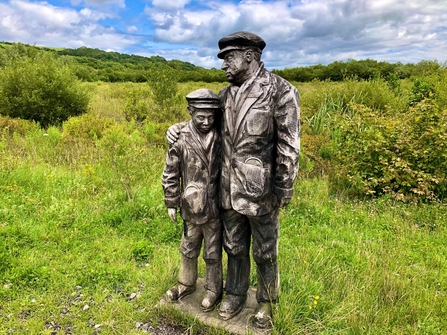
Father and Son sculpture
If your Dad was a miner then if you were a boy you would probably be a miner. Here a father walks his son to work for the first time. Lamp in hand and Tommy Box in their pockets. Children were employed to open and close doors which controlled mine ventilation, to allow drams to pass through.
Audio
3. 1892
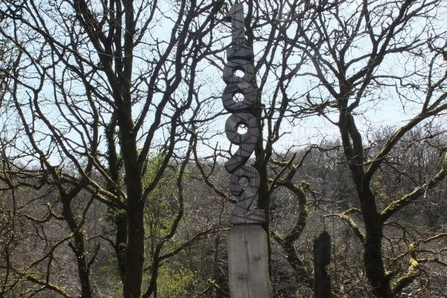
1892 sculpture.
Is the date that disaster struck, in the form of an explosion underground at the coal face. 112 men and boys died. Sixteen horses were also killed.
Audio
4. Past and Present
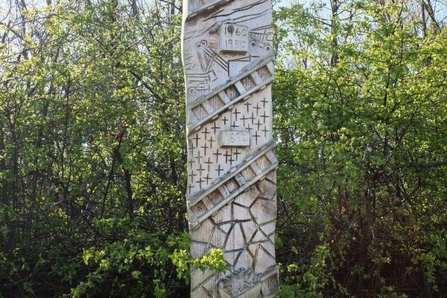
Past and Present sculpture.
Here you see the dates of significant changes and events of this site, from 1864 to present day. On top is a coal dram.
Audio
5. Badger
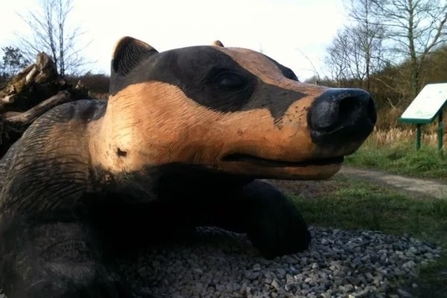
Badger sculpture.
The badger is the emblem on the Wildlife Trust South & West Wales. The Badger is our biggest land predator, a member of the Mustelid family and related to Stoats, Weasels and Otters. An unmistakable animal; large and grey, with a short fluffy tail, black belly and paws and the familiar black and white-striped face. The Badger is just as common as the Red Fox, but more nocturnal and elusive in its habits. Badgers live in large family groups in a burrow system known as a ‘sett’. They feed on small mammals, ground-nesting bird’s eggs, earthworms, fruit and roots and bulbs, which they dig up with their strong front paws. Cubs are born in January or February, but spend the first two or three month’s underground, only emerging in the spring.
Audio
6. Moth and Miners Lamp
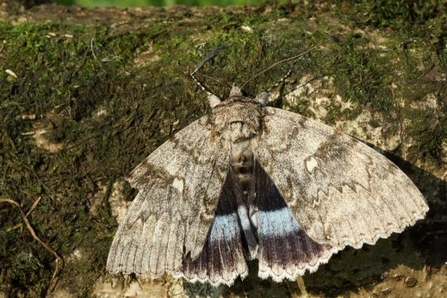
Clifden Nonpareil Moth. Vaughn Matthews.
The safety lamp was invented by Sir Humphrey Davy in 1815 to provide a safe source of light underground.
The lamp allowed oxygen for the flame to get in, but stopped a flame or spark mixing with explosive gases found in mines.
Moths are attracted to bright light at night. At Parc Slip there are over 600 different species of butterfly and moth (Lepidoptera) recorded at the reserve, including national rarities such as the Small Blue and Dotted Chestnut.
Best places for Lepidoptera are the species rich grassland habitats.
Audio
7. Mandrill / Pick with Foliage
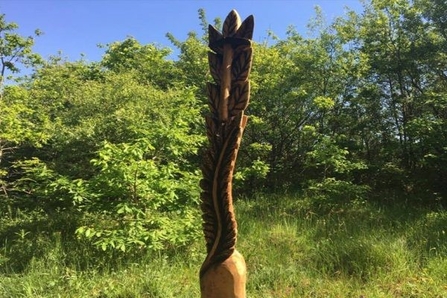
Mandrill / Pick with Foliage sculpture.
Mandril (or picks) were used to dig coal out from the coalface. They could also be used to break up large pieces of coal.
Working alongside local farmers and volunteers, the Wildlife Trust manages Parc Slip as a traditional farmland landscape of wildflower meadows and arable crops.
Audio
8. Colliery Horses
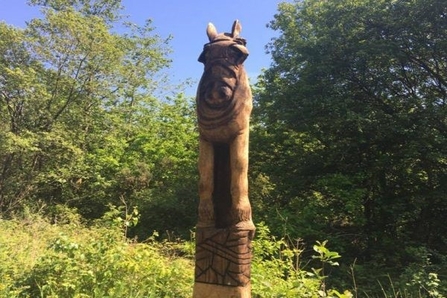
Colliery Horses sculpture.
Horses were used underground from the mid-18th century to the mid-20th century to haul drams of coal from the coal face to the shaft or drift bottom.
Typically, they would work an eight-hour shift each day, during which they might haul 30 tons of coal in drams (tubs) on the underground mine railway.
In drift mines ponies were normally stabled underground and fed on a diet with a high proportion of chopped hay and maize, coming to the surface only during the colliery’s annual holiday. The colliery horse carving is positioned on the present day bridleway.
Audio
9. Shovel and Orchid
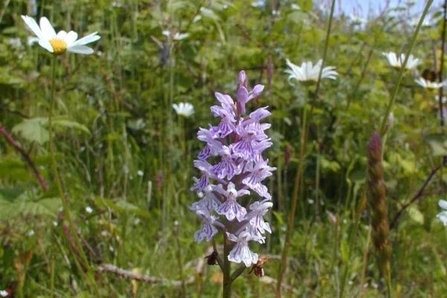
Shovel and Orchid sculpture.
In summer many of the fields at Parc Slip are alive with colourful wildflowers, from ragged robin and ox-eye daisy, to numerous species of orchid. These flowers attract insects, which in turn attract birds and reptiles.
Audio
10. Coal Face to Flowers & Sky
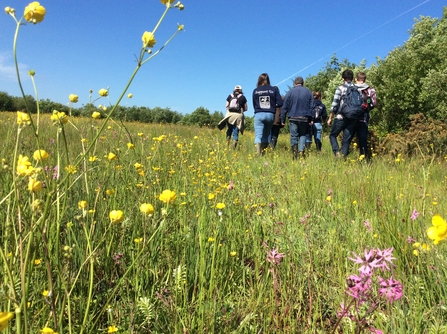
Coal Face to Flowers & Sky.
This depicts the natural changes from coal mine to nature reserve. Coal changes to soil, with small invertebrate soil, then small mammals such as the mole. Plants roots support flowers, in turn supporting airborne invertebrates, on to birds then sky, clouds and sun.
Audio
11. Orchard
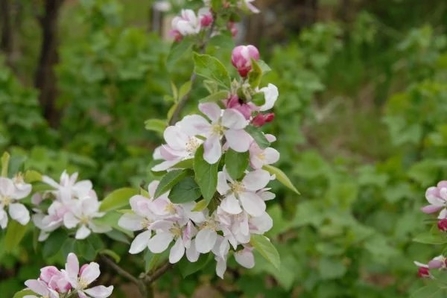
Orchard.
The orchard was created in 2021 as part of the Valleys Regional Park project. The formal orchard area is a mixture of apples, pears, plums and cherries in traditional and welsh heritage varieties.
The informal area is designed with wildlife in mind with native fruit trees like hawthorn and spindle. The blossom of the fruit trees will benefit our pollinators like bumblebees in early spring. Once established the fruit will be used in our visitor Centre café and for people to take home.
Audio
12. Arable Field
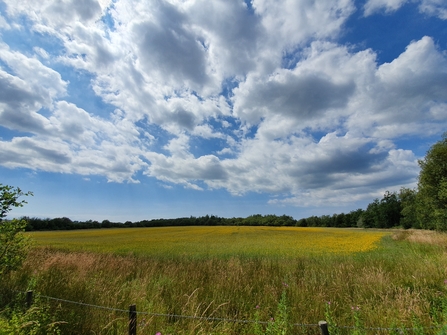
Arable Field.
In late summer the arable field looks its best. The field has been planted with sunflowers, corn marigolds, corn cockles, millet and other arable wildflowers to provide food for overwintering birds. It’s a very big bird table!
In winter, if you’re lucky, you can see flocks of finches and other birds.
Audio
13. Northern Wetlands
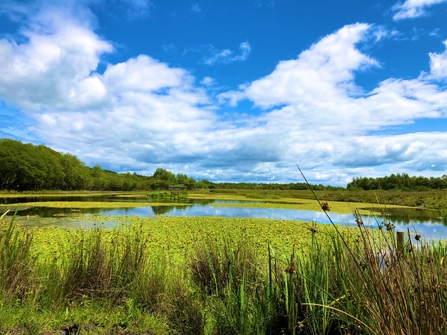
Parc Slip Wetlands.
The Northern Wetlands attracts a variety of wetland birds like lapwing, teal and tufted duck. The area was created during the restoration of the reserve from an opencast mine. It is now home to amphibians, reptile and small mammals.
Can you spot our highland cows? They are important conservation work by grazing the field.
Audio
14. Pond and Visitor Centre
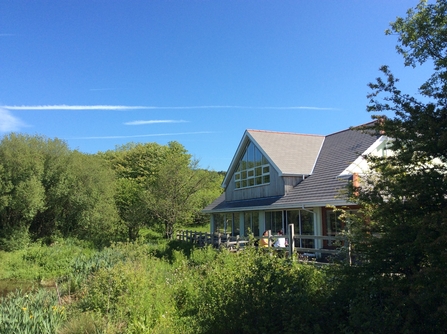
Parc Slip Visitor Centre and Pond.
A wild Welcome to Parc Slip Nature Reserve and Visitor Centre, managed by the Wildlife Trust of South and West Wales.
The 300 acre reserve is home to a variety of amazing wildlife and habitats and there are plenty of cycling and walking trails to explore. Don’t forget to stop for a coffee and cake at our visitor centre Café.
Audio

VRP Logo.
